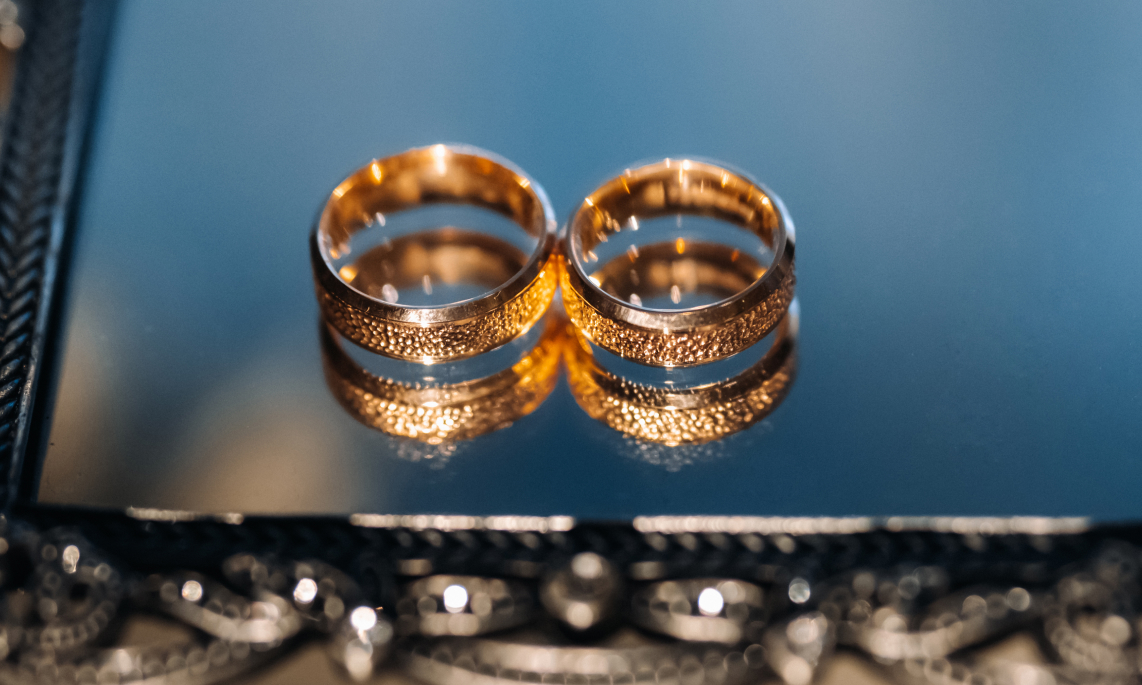
Engagement and wedding rings are symbols of love and commitment, and choosing the perfect ring is an exciting part of the wedding journey. While traditional smooth and polished rings have their own charm, textured engagement and wedding rings have gained popularity for their unique and eye-catching appeal. In this blog, we will explore the beauty and allure of textured rings, adding depth and personality to your special day.
Textured engagement and wedding rings offer a distinct aesthetic that sets them apart from traditional smooth bands. The textures create visual interest and add a touch of personality to the rings, making them stand out on the finger. From delicate patterns to bold designs, the textures create depth and dimension, enhancing the overall beauty of the ring.
There are various types of textures available for engagement and wedding rings. Some popular options include:
This technique involves creating small dents and irregularities on the metal surface, giving the ring a rustic and artisanal look. Hammered textures evoke a sense of uniqueness and craftsmanship.
A brushed finish creates a soft and matte appearance on the ring’s surface. This texture adds a modern and contemporary touch, perfect for those seeking a sleek and understated design.
Mil grain detailing involves small beaded edges or borders that surround the ring’s design elements. This vintage-inspired texture adds a touch of elegance and sophistication, reminiscent of antique styles.
Textured engagement and wedding rings can beautifully complement diamond accents, enhancing the overall aesthetic. Here are a few ways to incorporate diamonds into textured rings:
Choose a textured band with small diamond accents for a unique and captivating look. The contrast between the textures and the sparkling diamonds creates a captivating visual effect.
Opt for a textured halo setting around the centre diamond of an engagement ring. The textured halo adds depth and dimension, creating a stunning frame for the sparkling centrepiece.
Consider a textured band with alternating diamond and textured sections. This combination adds a dynamic element to the ring, showcasing the beauty of both textures and diamonds.
Textured engagement and wedding rings offer a refreshing twist to the traditional smooth bands, allowing you to express your personal style and add depth to your ring’s design. From hammered textures to brushed finishes and Mil grain detailing, there are endless options to explore. By combining textures with diamonds, you can create a truly unique and captivating piece of jewellery that symbolizes your love and commitment. Whether you prefer a modern, vintage, or rustic style, textured rings provide an opportunity to showcase your individuality and create a lasting impression.
Absolutely. During your consultation, we will work closely with you to achieve a wedding ring that perfectly matches your engagement ring. We have a wide selection of diamond rings in our showroom, and we can also create custom designs to ensure a seamless and harmonious match between the two rings.
The choice of metal for an engagement ring depends on various factors such as skin tone, lifestyle, and personal preferences. There is no definitive “best metal” as it is subjective.
Popular options include platinum, 18k gold, 14k gold, rose gold, palladium, and recycled metal. We can guide you through the characteristics and benefits of each metal to help you make an informed decision.
Traditionally, the engagement ring is worn on the fourth finger of the left hand, also known as the ring finger. However, the finger on which an engagement ring is worn can vary based on cultural traditions and personal preferences. In some countries, engagement and wedding rings are worn on the right hand.
Additionally, the rising popularity of men’s engagement rings has led to some men choosing to wear their engagement ring on their right hand and their wedding band on their left hand. Ultimately, it is up to you to decide which finger feels most meaningful and comfortable to wear your engagement ring.
Reference:
Wedding ring: https://en.wikipedia.org/wiki/Wedding_ring